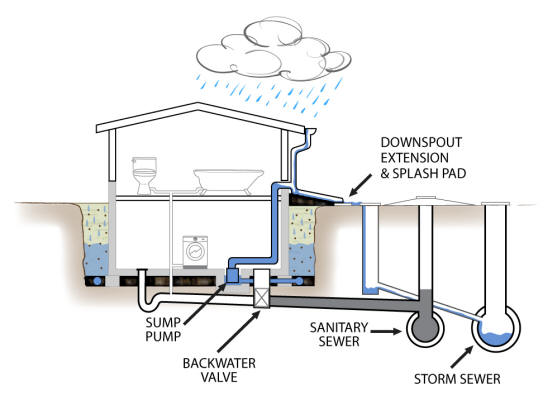A functioning drainage system is a vital component of any building, ensuring the efficient removal of wastewater and stormwater to prevent water damage and maintain sanitary conditions. Understanding how a drain system works is essential for homeowners, builders, and anyone involved in the construction or maintenance of buildings. In this comprehensive guide, we will explore the principles and components of a drain system, shedding light on the intricate network that keeps our homes dry and clean.

1. The Basics of Drain Systems
At its core, a drain system is a network of pipes and fixtures designed to channel wastewater and stormwater away from a building. It serves several key functions, including:
Wastewater Removal: Drains remove wastewater from sinks, showers, toilets, and appliances to prevent it from accumulating within the building.
Stormwater Management: Drain systems also handle stormwater runoff from roofs, driveways, and other impermeable surfaces to prevent flooding and erosion.
Preventing Sewer Gas Entry: A properly designed drain system includes traps and vent pipes that prevent sewer gases from entering the building while allowing air to flow through the system.
2. Drain System Components
A drain system comprises various components, each with a specific role. The primary components include:
Drain Pipes: These pipes are responsible for conveying wastewater and stormwater away from fixtures and buildings. They come in different materials, such as PVC, cast iron, or copper.
Traps: Traps are u-shaped pipes located under fixtures like sinks and toilets. They create a water seal that prevents sewer gases from entering the building.
Vent Pipes: Vent pipes extend from the drain system to the roof, allowing air to enter and exit the system. This ensures that wastewater flows smoothly and prevents the buildup of pressure that could lead to trap siphonage.
Cleanouts: Cleanouts are access points in the drain system that provide an entry for plumbers to inspect and clean the pipes.
3. Drainage System Operation
The operation of a drain system is based on the principles of gravity and pressure. When wastewater flows into the system, it relies on gravity to move downhill through the pipes and eventually exit the building. Here’s how it works step by step:
Wastewater from fixtures enters the drain pipes, which are designed with a gentle slope to encourage the flow of water.
Traps under fixtures create a water seal, preventing sewer gases from entering the building. These traps use the principle of displacement, where the incoming water pushes the trapped air out.
Vent pipes allow air to enter the system, equalizing air pressure and preventing water from siphoning out of traps. This ensures that wastewater flows smoothly without interruptions.
Drain pipes join together and form larger branches that eventually lead to the building’s main sewer or
Stormwater runoff from roofs and other surfaces enters a separate drainage system that channels the water to appropriate outlets, such as storm drains or retention ponds.
Stormwater systems also use gravity to transport water, ensuring that it flows away from the property to prevent flooding and erosion.
4. Maintaining Drain Systems
Proper maintenance is essential to ensure the longevity and efficiency of a drain system. Regular maintenance tasks include:
Clearing blockages and debris from traps and drain pipes.
Inspecting and repairing any damaged or corroded pipes.
Ensuring that vent pipes are free from obstructions.
Checking for leaks or signs of water damage.
Cleaning and maintaining stormwater drainage systems to prevent blockages and flooding.
5. Common Drainage Issues
Despite their durability and efficiency, drain systems can experience issues over time. Some common problems include:
Blockages: Accumulated debris or foreign objects can block drain pipes, leading to slow drainage or backups.
Leaks: Damaged or corroded pipes can develop leaks, potentially causing water damage to the building.
Clogs: Clogs in traps or drain pipes can result in unpleasant odors and slow drainage.
Root Intrusion: Tree roots seeking moisture and nutrients can infiltrate drain pipes, causing blockages and damage.
Improper Installation: Poorly designed or improperly installed drain systems can lead to issues, including poor drainage or backflow.
6. Professional Drain System Installation and Repairs
For complex drain system installations, repairs, or troubleshooting, it is advisable to consult a professional plumber or drainage expert. They have the expertise and tools to address issues, ensure the proper functioning of your drain system, and prevent costly damage to your property.
Conclusion
A functioning drain system is essential for maintaining a healthy, safe, and dry environment in any building. Understanding how a drain system works and the key components involved is crucial for homeowners, builders, and maintenance professionals. By comprehending the principles of gravity and pressure, as well as the role of traps, vent pipes, and cleanouts, you can ensure that your drain system operates efficiently and reliably. Regular maintenance and professional assistance, when needed, will help keep your drain system in optimal condition and prevent common drainage issues.

